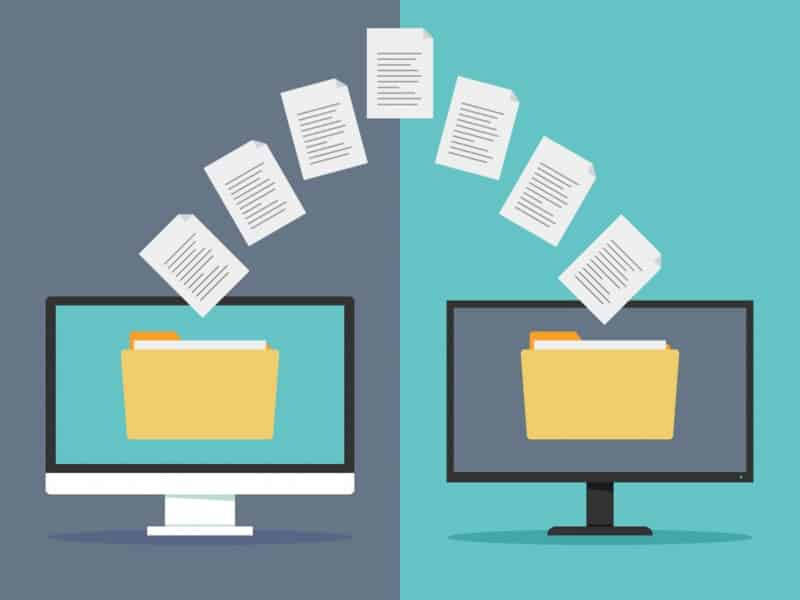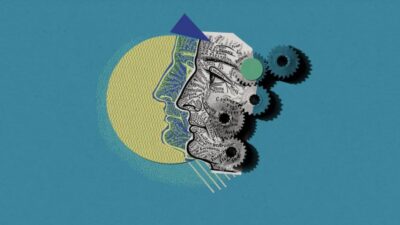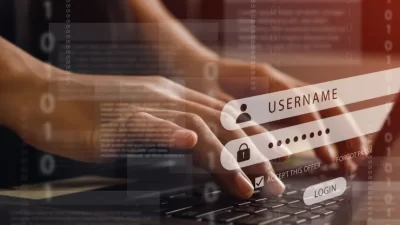Transferring files from PC to PC can be done quickly and securely without losing any data in the process.
By Intel
Load Your Data Onto Your New PC
- Back up your old PC data
- Choose the file transfer method that works best for you
- Obtain the equipment or service needed for the transfer, or set up a home network
- Keep your old computer for a few weeks and ensure it’s wiped clean if you discard it
There’s nothing more exciting than getting a powerful new computer that lets you zip through tasks, run new applications, and play games at astounding speed. However, there’s nothing more daunting than realizing you have to move all your music, pictures, documents, and other files from your old computer to the new computer.
Fortunately, you don’t have to beg and bribe your friends to help with this moving day. There are a variety of ways to easily and safely share files and even move programs from your old computer to your new one while keeping your data safe.
DIY Approach: Manually Transfer Files
If you’re a hands-on sort, one of the simplest ways to get your new computer loaded with all your files is to manually move them. There are a couple of ways to do this.
For starters, plug your old computer into a USB flash drive or external hard drive, which typically can cost from $30 to several hundred dollars depending on the storage amount, speed, and functionality you need. Simply copy your files onto the external drive, eject the storage device, plug the storage device into the new computer, and then reverse the process to load the files onto it. Tip: Some computers have eSATA ports that are specifically designed for external hard drives and move data even faster than USB ports.
If you don’t want to purchase an external hard drive, you can also move and store your files into the cloud—using an Internet-based storage service such as Microsoft OneDrive*, Google Drive*, or Dropbox*. Again, just drop and drag your files from your old computer to the cloud service, and then drag-and-drop the files onto your new computer. These services are often free for a small amount of storage, and then charge a monthly subscription as your storage needs increase.
Speed Things Along: Use a Transfer Cable
If you find using cloud storage to be a time drag, or if you want to avoid a monthly subscription to cloud services, an alternative option is to move your files with a transfer cable. The cable plugs into a port on both your new computer and old computer. Typically, cables come with software that automates the transfer of files when upgrading from an older Windows* 10, 8.1, 8, 7, Vista, or XP computer to a newer computer. A transfer cable works faster than an external hard drive, since the old computer connects directly to the new one while eliminating the middleman (the external drive).
Before you start to transfer everything, think about whether you really need it all. Setting up a brand new machine marks an ideal moment to ditch old files by archiving them, thus cleaning up your files and folder structures.Jill Duffy, PC Magazine
Hire a (PC) Mover: Use Do-It-All Software
Earlier versions of Windows provided a service called Easy Transfer* that allowed users to easily move files between computers. Unfortunately, that was scrapped with Windows* 10. Have no fear, though: Microsoft’s partnered up with vendor Laplink PC Mover* to duplicate the functionality offered by Easy Transfer. The vendor’s PCMover Express* transfers data and settings from computers running Windows* XP to computers running Windows* 8.1 or later. The service costs about $15. PC Mover Professional costs more, but it also allows you to move your applications. If you have problems, both services offer 24-7 assistance.
This approach requires a fee, but it automates the processes and can guide you to ensure you don’t overlook files that might be placed in an unfamiliar place on your old computer.
Sundry Operating Systems: Transfer Files from Mac to PC or PC to Mac
You can manually transfer files between Mac and PCs in the same way that you move them between PCs with external drives, cloud services, or home networks. Or you can let the computer itself do the job of personal assistant in charge of moving and file sharing: The Mac OS X Lion and later operating system provides a nifty tool called Migration Assistant that transfers your contacts, calendars, email accounts, and more from a PC and puts these files in the appropriate places on your new Mac.
Clean Sweep: Keep Your Old Data Out of the Wrong Hands
After you move your files, you should keep your old computer for at least a couple of weeks in case you overlooked any files. However, if you sell, discard, or give away your old computer, make sure all your data, and personal information are removed. Simply transferring the files doesn’t do that. Even deleting the files or reformatting the disk can still allow experts to retrieve information you don’t want them to have, such as your bank information or old emails. Fortunately, free data destruction programs, like Darik’s Boot And Nuke (DBAN), can erase everything on your old computer, ensuring you leave no (data) trace behind.
Stay Protected: Back Up the New Stuff
Now that you’ve gotten used to moving files off your old PC, it’s a good time to make sure you have an ongoing backup system in place in case you have to restore those files again. Windows* 8 and above provides a handy feature called File History that allows you to automatically and routinely back up files to an external hard drive. This feature ensures your data won’t be history if the worst happens.
If you own a Mac, you have a variety of choices and platforms for backing up your data, from the iCloud to programs like Time Machine, depending on what version of OS X you’re running.
Remember: While there are plenty of easy ways to move and share data, you can only move the data you can access, so make sure your documents, photos, and other precious data remain protected even if your computer becomes lost or damaged. It’s easy to do automatically, and it ensures your next (computer) moving day will go more smoothly.





